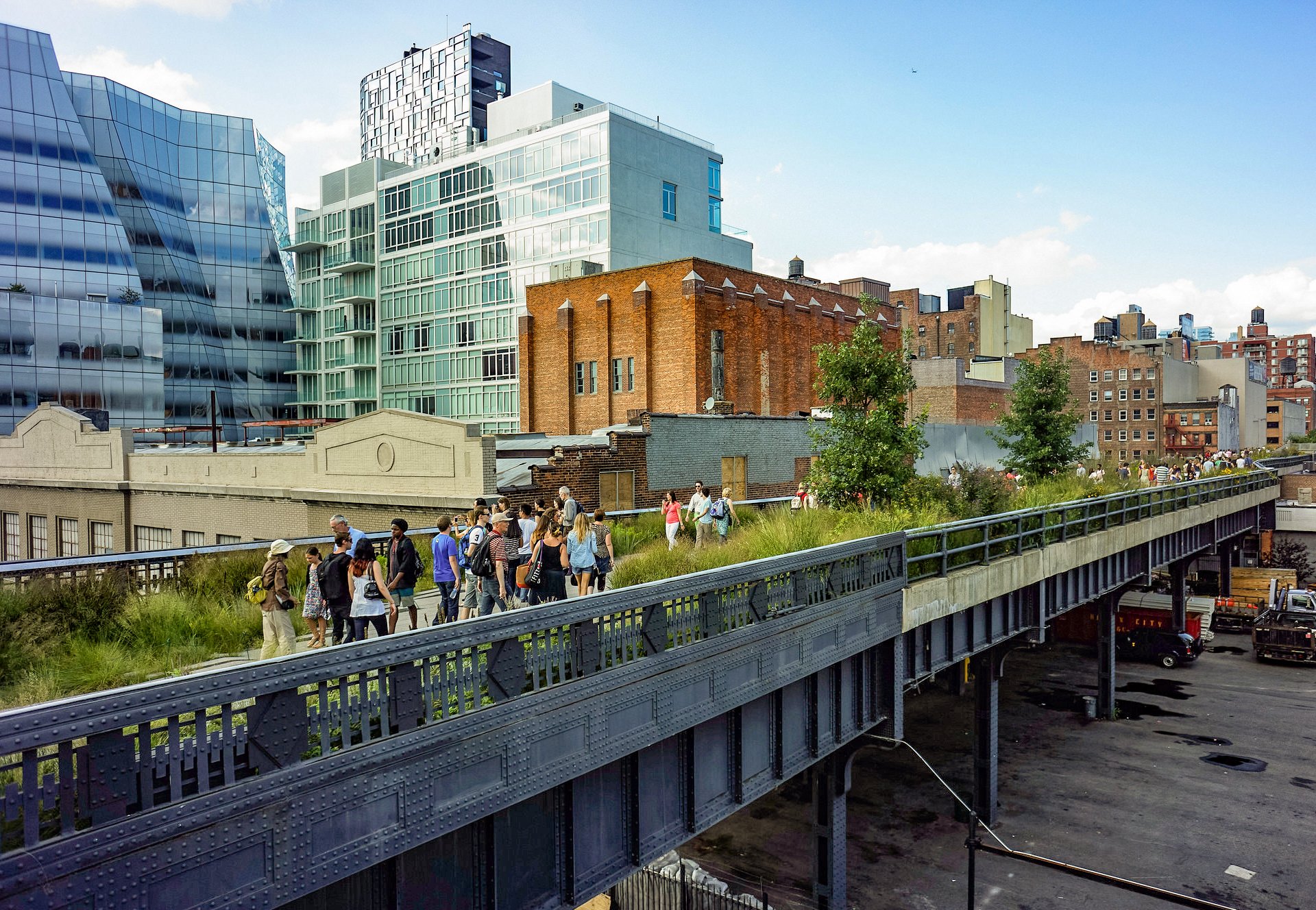Roofs, we often see them as the unsung heroes of buildings. Functional, yes, but hardly the center of attention or a source of inspiration. Conventionally, roofs are cloaked in dull, unattractive asphalt coatings, offering little more than protection from the elements. But what if we told you that roofs could be transformed into something both beautiful and environmentally friendly? Enter the world of green roofs, or living roofs, where modern architecture embraces nature in its design.
The idea of green roofs might not be for every building or every situation, but when they can be incorporated, they bring a touch of beauty and sustainability that can utterly transform the entire structure. Imagine visiting a friend's house, and instead of showing you their plain asphalt-covered roof, they lead you to a vibrant, thriving green space teeming with life. It's like discovering that the backyard grew wings, and suddenly, you're seeing architecture in a whole new light.
Beyond aesthetics, green roofs offer a world of benefits that go far beyond what meets the eye. So, let's dive into the world of green roofs, uncovering their environmental significance and the myriad reasons they deserve a prominent place in our urban landscapes.
Roofs Reimagined: From Dreary to Dazzling
Roofs, traditionally, have been the uncelebrated components of architectural design. Most of the time, they remain out of sight or are relegated to mere utilitarian structures. Their primary purpose? To keep us dry. However, the conventional asphalt roof coatings do little to uplift the aesthetic appeal of a building. Who wouldn't want to trade these uninspiring surfaces for the natural splendor of a green roof?
Green roofs aren't a one-size-fits-all solution; their suitability depends on the context and the building's purpose. But when they can be incorporated, they breathe life into the structure. Imagine walking into someone's home, and instead of leading you to their ordinary asphalt-covered roof, they guide you to a lush, thriving green oasis teeming with life. It's like watching a backyard take flight, demonstrating the transformative power of green roofs.
Beyond the Surface: Environmental Marvels of Green Roofs
Enhanced Insulation and Extended Roof Lifespan
Conventional roofs endure constant exposure to the elements, leading to the gradual degradation of roofing materials. In contrast, green roofs create a natural insulation barrier that shields the underlying living spaces from the outside's harsh conditions. The layer of plants and soil acts as a protective shield, reducing temperature fluctuations and preventing the sun's direct impact on the roofing membrane. This protective layer not only extends the lifespan of the roofing but also enhances the building's energy efficiency by moderating indoor temperatures.
Mitigating the Urban Heat Island Effect
Urban areas often experience the "heat island" effect, where temperatures soar significantly higher than in the surrounding rural areas, thanks to heat-absorbing surfaces like concrete and asphalt. This effect results in increased energy consumption for cooling, worsened air pollution, and discomfort for urban dwellers. Green roofs, with their natural vegetation, absorb and retain heat rather than reflecting it. They serve as natural coolants, helping to counteract the urban heat island effect, making cities more comfortable, healthier, and less energy-intensive.
Stormwater Management
Traditional roofs with their impermeable surfaces contribute to stormwater runoff issues in urban areas. Rainwater flows directly into storm drains, picking up pollutants and overwhelming sewer systems during heavy rains. Green roofs, on the other hand, act as natural sponges. The soil and vegetation absorb rainwater, allowing it to be slowly released over time, reducing the burden on stormwater management infrastructure. By mitigating stormwater runoff, green roofs help prevent flooding, reduce pollution in water bodies, and improve water quality. This sustainable approach to rainwater management not only benefits the environment but also enhances the resilience of urban infrastructure.
Improved Air Quality
Urban areas often grapple with poor air quality, characterized by high levels of pollutants and emissions. Green roofs function as natural air purifiers. The plants absorb carbon dioxide and release oxygen, fostering a healthier urban environment. Beyond carbon sequestration, green roofs filter out airborne pollutants and particulate matter, contributing to improved air quality in their immediate vicinity. This combined effect makes green roofs a valuable addition to urban areas, promoting overall well-being and health for residents.
Noise Reduction
Noise pollution is a growing concern in urban areas, affecting the quality of life for residents. Green roofs provide effective noise insulation, diminishing the impact of external noise sources. The vegetation and substrate layer on a green roof act as a natural sound dampener, making buildings more peaceful and comfortable. This noise reduction feature is especially valuable in areas with high traffic, bustling streets, or proximity to airports and industrial zones. Green roofs offer a natural acoustic buffer, creating a tranquil and serene atmosphere for occupants.
Food Production
Some green roofs go beyond aesthetics and environmental benefits, offering practical advantages like food production. Rooftop gardens, often referred to as edible green roofs, provide an opportunity to grow vegetables, herbs, and even fruits in an urban setting. This sustainable approach to agriculture supports local food production, reduces food miles, and encourages self-sufficiency. Edible green roofs can also serve as communal spaces, fostering community engagement and a sense of shared responsibility. They contribute to the sustainability of cities by promoting locally sourced, fresh produce.
Nature's Artistry on Your Rooftop
Despite the myriad environmental benefits, it's worth reiterating the aesthetic appeal of green roofs. These living rooftops can transform otherwise ordinary buildings into showcases of natural beauty. The sight of flourishing plants, colorful flowers, and lush greenery provides a visual contrast to the concrete jungle of urban environments. Moreover, the ability to create diverse, seasonally evolving landscapes on green roofs allows architects and landscape designers to showcase their creativity. These spaces become living works of art, drawing attention and admiration from passersby.
Green Roofs Around the World
As our world becomes increasingly urbanized, the adoption of green roofs is on the rise. Many cities have recognized the potential of green roofs to address environmental and urban challenges. Let's take a tour around the globe to explore some remarkable examples of green roofs:
Credit: Dansnguyen
The High Line, New York City, USA
The High Line is a famous urban park in Manhattan, New York City, built on an old railway viaduct. This innovative park features a combination of green roofs and extensive plantings, transforming a disused railway into a vibrant public space and inspiring green roof projects throughout the city.
Credit: Maurizio Ghidoli
The Bosco Verticale, Milan, Italy
The Bosco Verticale, or "Vertical Forest," consists of a pair of residential towers in Milan, Italy, known for their striking appearance. These high-rise buildings are adorned with a variety of trees and plants, creating a vertical forest within the city. This project has improved the city's air quality and earned international acclaim for its integration of nature into the urban landscape.
Credit: Norbert Nagel
The Osthafen, Frankfurt, Germany
In Frankfurt, the Osthafen (East Harbor) has been transformed into an ecological industrial park. The redevelopment project includes green roofs on many of its buildings, reducing the urban heat island effect and enhancing the surrounding environment. The Osthafen showcases how industrial areas can contribute to sustainability and biodiversity in cities.
Credit: Alex Liivet
The Library of Birmingham, UK
The Library of Birmingham features a visually stunning green roof that showcases a diverse array of plants. This green oasis has become a beloved space for both library visitors and city residents, demonstrating how green roofs can be incorporated into public and cultural spaces, enhancing their appeal and functionality.
Credit: Construction Database
The Tree House, Singapore
Singapore's Tree House condominium complex boasts a lush green roof that serves both as a recreational area and an aesthetic attraction. The rooftop gardens and plantings contribute to the city's commitment to being a "City in a Garden." The Tree House project illustrates how green roofs can provide a natural escape within urban environments.
Challenges and Considerations
While the benefits of green roofs are undeniable, there are challenges and considerations to be aware of when planning and implementing them:
Initial Cost: Installing a green roof can be more expensive than traditional roofing systems due to the need for additional structural support and waterproofing. However, the long-term savings in energy costs, extended roof lifespan, and environmental benefits can offset the initial investment.
Maintenance: Green roofs require ongoing maintenance, including weeding, watering, and plant care. Regular inspections are essential to ensure the roof's health and performance.
Weight Load: The additional weight of a green roof must be factored into the building's structural design. This may require reinforcement of the existing structure to accommodate the added load.
Local Climate: The suitability of green roofs varies depending on the local climate. Factors such as precipitation levels, temperature extremes, and sunlight availability should be considered in the design and plant selection.
Accessibility: Consider how the green roof will be accessed and used. Whether it's for recreational purposes, gardening, or simply as a visual amenity, access needs to be carefully planned.
Plant Selection: Choosing the right plants for the green roof is essential. Native plants are often a good choice, as they are well-adapted to the local climate and require less maintenance.
Local Regulations: It's important to be aware of local building codes and regulations regarding green roof installation. Some areas may offer incentives or requirements for green roof implementation.
In conclusion, the next time someone invites you to their home and proudly guides you to their roof, you won't be met with the usual monotony of asphalt shingles. Instead, you may find yourself standing in awe of a lush green oasis that showcases the boundless potential of architecture to harmonize with nature and elevate our urban landscape. Green roofs are more than just a roof over our heads; they are a testament to the synergy between human creativity and the natural world, a living testament to our commitment to a greener, healthier, and more sustainable future.
Green Roof installed by Home Front Build, Designed by CarbonShack
Stay connected and never miss out! Subscribe to our newsletter for exclusive access to upcoming events. a collection of magazine articles, and blogs.








